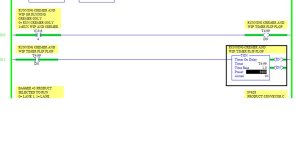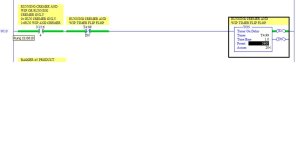As I said in my first response, the details will vary depending on the brand and model of PLC. You haven't told us what you're using. If, for example, I tell you how to do it using an Automation Direct DL06 and you have an Omron PLC, we'll both be frustrated.
The most common timer in all PLCs is an On-Delay timer, often called a TON. When the logic controlling the timer is true, the timer function accumulates time. When the logic controlling the timer is false, the timer resets the accumulated time value back to zero. When the accumulated value is equal to or greater than the preset, the timer turns on its "Done" status bit. Different brands of PLC handle the "Done" bit differently.
Most PLCs will let you select the time increment used by the timer. If you choose seconds as the increment, then the preset for a one hour timer will be 3600. If you choose tenths of a second as the time increment your preset will need to be 36000. This can be a problem in some PLC brands because a timer's accumulator is limited to a signed 16-bit integer which limits the range of values to between -32768 to +32767.
You can begin to understand how it is difficult to answer your questions without more information from you.




